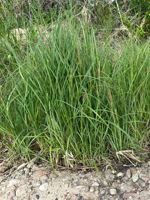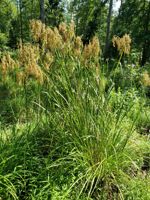Mon-Fri 9am - 5pm Mountain time
Wheat Sedge vs Woolgrass
Carex atherodes
Scirpus cyperinus
CUSTOM GROW
CUSTOM GROW
Wheat Sedge is a native perennial sedge commonly found in wetlands, ditches, and along shorelines. It thrives in saturated soils, spreading by rhizomes to form large colonies that stabilize both soils and shorelines. This makes it valuable for wetland and riparian plantings.
Its distinctive, wheat-like seed spikes add seasonal character while providing food for waterfowl, and its dense clumps supply cover and nesting habitat for birds and small animals. Together, these traits make Wheat Sedge an important species for enhancing biodiversity and supporting healthy wetland ecosystems.
Woolgrass is a native perennial sedge that forms dense clumps in wetlands, ditches, and along shorelines. Its ability to thrive in saturated soils and shallow water, combined with its spreading growth habit, makes it especially valuable for waterside & riparian plantings, erosion control, ecological restoration, and naturalization projects.
The distinctive spikelets are covered in brown woolly bristles, which is where it gets the name Woolgrass. It produces seeds that are eaten by waterfowl and small mammals, while its dense stems offer cover and nesting habitat. It grows most actively in spring and fall, slowing or going dormant in the summer heat.

